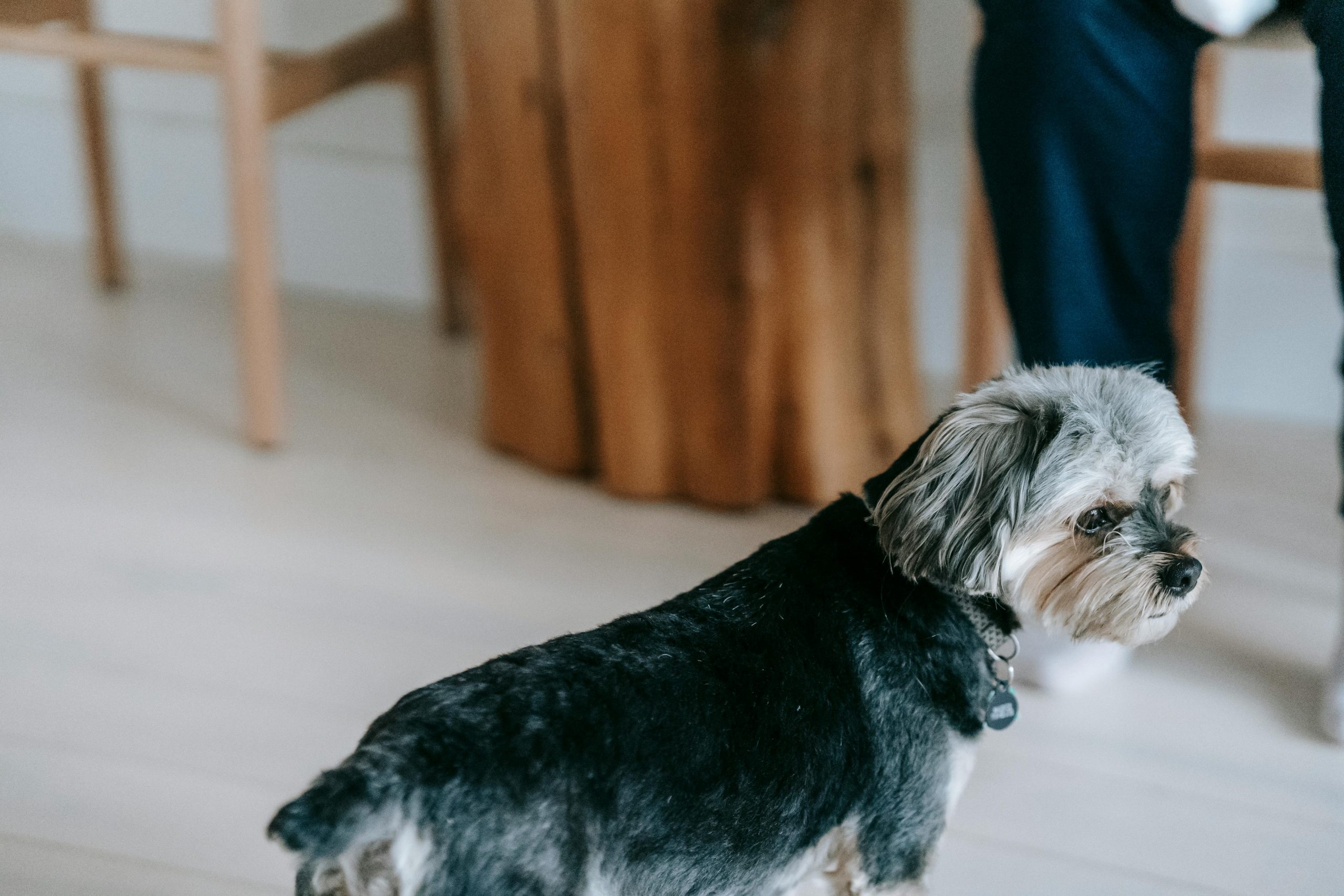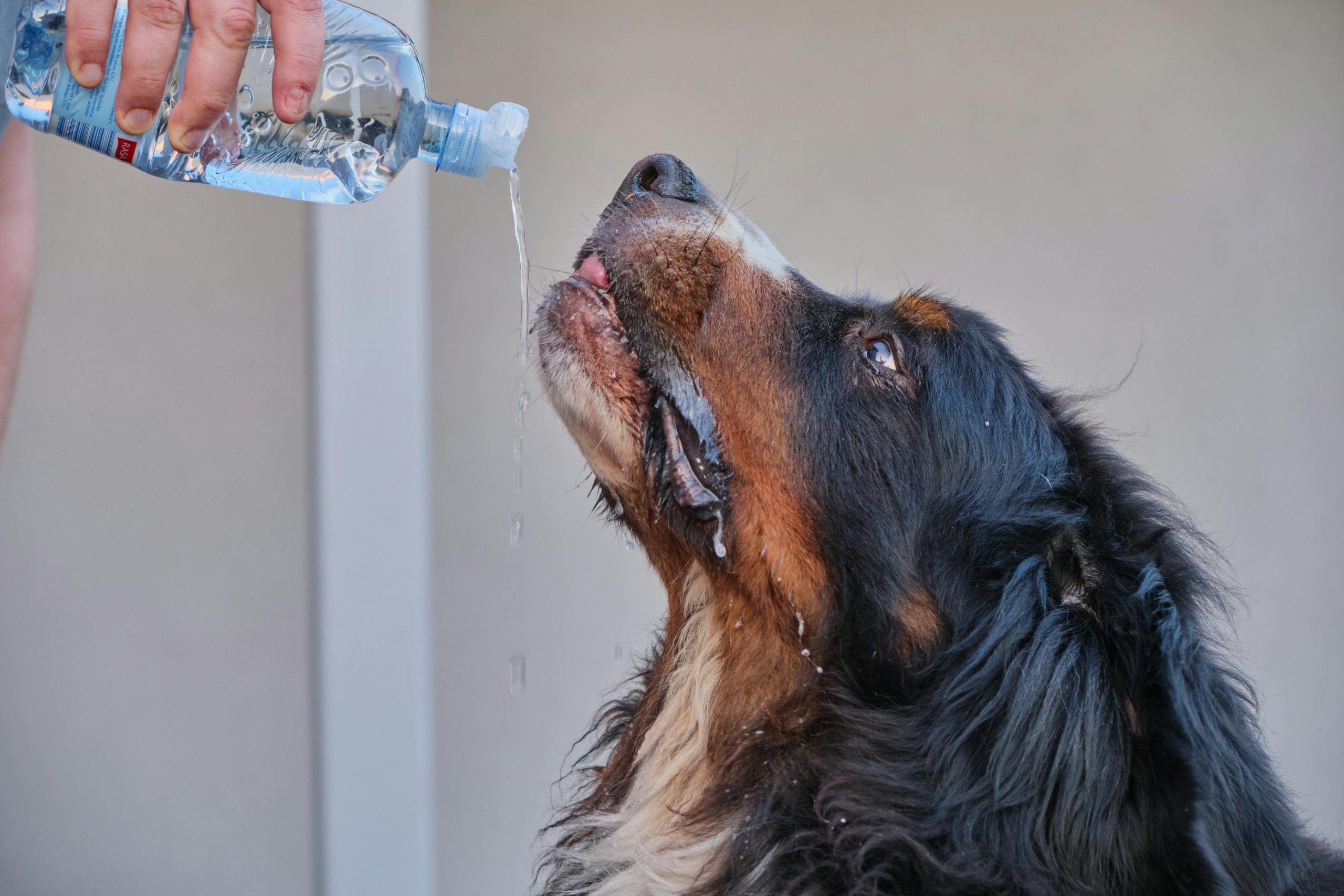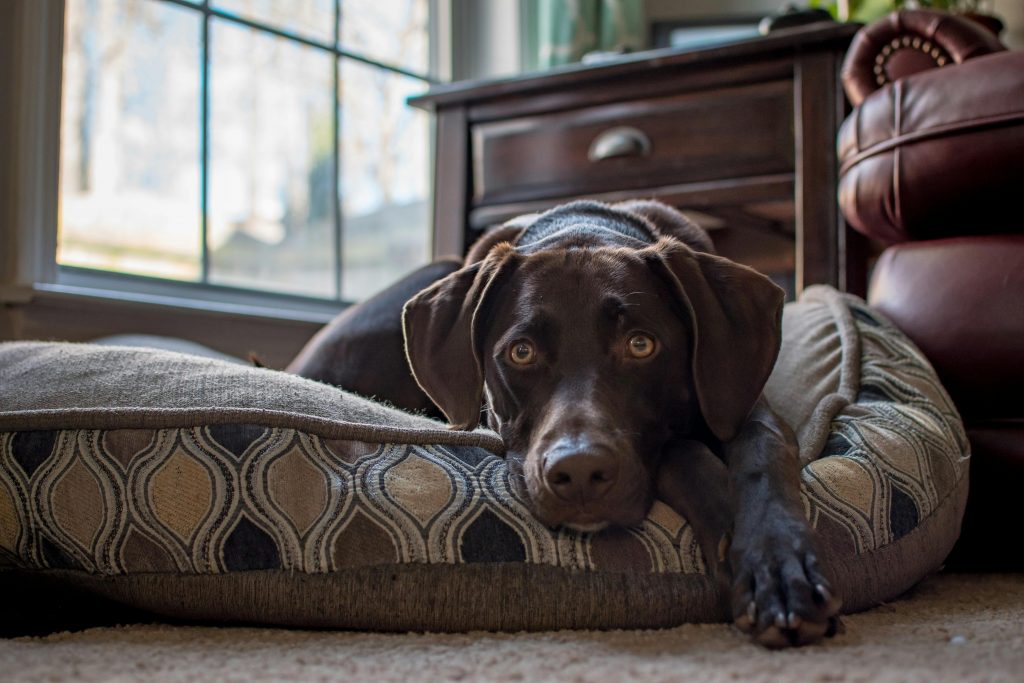If your dog keeps peeing inside, you’re not alone. Many dog owners deal with this frustrating issue. Whether your dog is a puppy in training or an older dog with sudden accidents, there are proven steps you can take to fix the problem. This guide will help you understand why it’s happening and how to stop a dog from peeing in the house—for good.
1. Understand the Root Cause

Before you can stop the behavior, it’s important to figure out why it’s happening. Dogs pee indoors for many reasons, including medical conditions, stress, and incomplete house training. Look for patterns. Is it happening at night? Only when you leave the house? Right after drinking water?
Common Causes:
- Incomplete potty training
- Medical issues like a urinary tract infection (UTI), diabetes, or kidney disease
- Stress or anxiety, especially separation anxiety
- Marking behavior, especially in unneutered males
- Old age or incontinence
If the behavior is new or seems unusual, a vet visit is the first step.
2. Visit the Vet to Rule Out Medical Issues
If your house-trained dog suddenly starts having accidents, contact your veterinarian. They’ll check for underlying conditions that may be causing the issue. Ask yourself: why is my dog peeing so much? This could be a sign of:
- Urinary tract infection (UTI)
- Bladder stones
- Kidney disease
- Diabetes
- Cushing’s disease
- Hormonal imbalance
Your vet may run urine or blood tests to diagnose the problem. If it’s a health issue, medication or dietary changes may fix the problem quickly.
3. Revisit House Training Basics
Sometimes, dogs forget their training—especially if they were never fully trained to begin with. Go back to the basics using positive reinforcement.
Tips for Retraining:
- Take your dog out on a regular schedule, including right after eating, drinking, and waking up.
- Reward them with treats or praise as soon as they pee outside.
- Stay consistent—even one skipped walk can confuse your dog.
- Use the same door every time you go outside so your dog learns the routine.
If your dog goes inside, clean the spot thoroughly and avoid scolding them after the fact. They won’t understand why they’re being punished.
4. Use the Right Cleaning Products
Dogs have a strong sense of smell. If they can still smell urine, they may return to the same spot again and again. Ordinary cleaners don’t break down urine proteins.
Use Enzymatic Cleaners:
- These cleaners eliminate the scent completely, not just mask it.
- Look for products made for pet stains and odors.
- Avoid using ammonia-based cleaners—they smell like pee to dogs.
Thorough cleaning helps break the cycle of repeat accidents.
5. Create a Set Schedule
A daily routine helps your dog know when and where they’re supposed to go potty.
Sample Schedule:
- 7:00 AM – First potty break of the day
- 8:00 AM – Breakfast
- 10:30 AM – Mid-morning potty
- 1:00 PM – Afternoon break
- 6:00 PM – Evening walk
- 9:00 PM – Final potty before bed
Keeping meals, walks, and potty times consistent can prevent confusion and reduce accidents.
6. Limit Water Before Bedtime

While your dog should have access to clean water throughout the day, you can limit water about 2 hours before bedtime if nighttime accidents are a problem.
Note: Never restrict water if your dog has a medical condition that causes excessive thirst. Always check with your vet first.
7. Use Crates or Confinement Training
Dogs don’t like to pee where they sleep. A properly sized crate can help train your dog to hold it until they go outside.
Crate Training Tips:
- The crate should be just large enough for your dog to stand up, turn around, and lie down.
- Don’t use the crate as punishment.
- Gradually increase the time your dog spends in the crate.
- Take your dog outside immediately after letting them out.
If a crate isn’t an option, use gates to limit access to certain areas of your home until they’re reliably trained.
8. Address Separation Anxiety
If your dog pees when you leave, it might be a sign of separation anxiety.
Signs Include:
- Peeing or pooping shortly after you leave
- Destructive chewing or scratching at doors
- Excessive barking or howling
Solutions:
- Practice short departures and gradually extend the time
- Leave behind a worn shirt or calming toy
- Try calming aids like thunder shirts or dog-safe supplements
- Talk to your vet about behavior training or anxiety medications
9. Consider Spaying or Neutering
Unneutered dogs—especially males—are more likely to mark their territory indoors. Neutering reduces hormone-driven behaviors and may stop indoor marking.
While it’s not a guaranteed fix, it often helps with:
- Marking behavior
- Roaming tendencies
- Aggression toward other dogs
Talk to your vet about the best timing for the procedure.
10. What You Can Do at Home
Here are things you can do right now to help stop indoor peeing:
a. Monitor Water Intake
Track how much your dog drinks each day. If they’re drinking more than usual, let your vet know—it could be a sign of a health issue.
b. Watch for Other Symptoms
Keep a simple journal with notes about:
- How often your dog pees
- Changes in appetite, mood, or activity
- Any unusual urine color or smell
This can help your vet make a quicker, more accurate diagnosis.
c. Avoid Punishment
Don’t scold your dog for peeing inside unless you catch them in the act. Even then, a firm “no” and quick redirection outside is more effective than yelling. Punishment can cause fear and more accidents.
d. Keep the Area Clean
Use enzymatic cleaners to get rid of all traces of urine odor. This discourages your dog from peeing in the same spot again.
11. Prevention Tips
While not every accident can be avoided, good habits can make them rare.
Prevention Checklist:
- Regular vet checkups
- Keep vaccines and parasite control up to date
- Feed a balanced diet
- Monitor water and potty routines
- Reduce stress and boredom
With the right care, your dog can stay healthy and house-trained.
When to Call the Vet
You should contact your vet if:
- Your dog suddenly starts having frequent accidents
- You see blood in their urine
- They seem to be straining or in pain
- They’re drinking far more than usual
- You’ve tried training and nothing works
Medical help is the best next step if training doesn’t improve things within a week or two.
Final Thoughts
Learning how to stop a dog from peeing in the house takes time and patience. Whether the cause is medical or behavioral, the key is consistency and kindness. Never punish your dog—help them understand what you expect, and reward them when they get it right.
If you’re ever unsure, talk to your vet. With a clear plan and the right support, you’ll help your dog get back on track and keep your home clean and stress-free.

